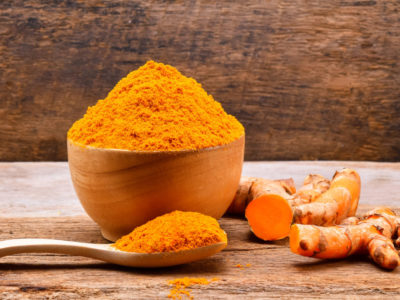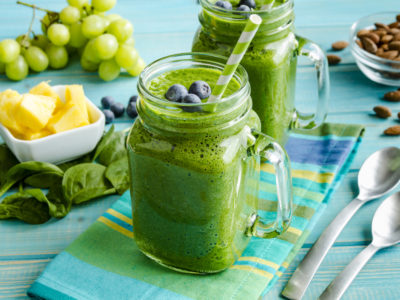Recently, we brought you an article on how bone broth can help heal an aching and damaged leaky gut.
In case you missed the article, here are the broad strokes:
- The gelatin, broken down from the cartilage in the bones, feeds the mucous lining of the stomach.
- Broth is easier to digest than solid food, so your gut can take some time off of work, replenish, and heal itself.
- The amino acids in bone broth help to fight and reduce inflammation, ideal for people with gut pain.
Here are some more benefits:
- It fills you up—without adding pounds. Bone broth and bone-broth soups are rich, complex, hearty, and soul-satisfying. It has virtually zero carbs and few calories, so you can indulge even when you’re fasting.
- It’s packed with collagen. Collagen helps your body burn fat and form lean muscle mass, shaping your arms, legs, and core.
- It detoxifies your body. The amino acids, glycine and proline, aids your liver in removing toxins from your body.
- It heals your gut. Helps your digestive system by battling problems like —constipation, diarrhea, and gas. The gelatin and other nutrients in bone broth help to heal the gut, curing digestive problems and facilitate weight loss.
- It supplies you with easy to absorb essential minerals. Including Calcium, magnesium, and phosphorus.
- It aids digestion. Bone broth is hydrophilic—it attracts and holds liquids, like digestive juices. This is another reason why it helps you digest food more efficiently.
- It heals your joints. Bone broth gives you a generous supply of glucosamine, chondroitin, and other glycosaminoglycans (GAGs) that help heal your joints. GAGs also help your body lay down collagen where it’s needed.
- It’s anti-inflammatory. When you heal that inflammation with nutrients like those concentrated in bone broth—including anti-inflammatory proline, glycine, and arginine—your weight starts to fall off.
So we know it’s good for you and we know that it can help repair intestinal cracks and strengthen the integrity of the gut lining.
A lot of contention remains about how to consume it – is store-bought okay? How long should cooking it take? Where do you get the bones? Can you use vegetable scraps? Which recipe do you use? How much should you consume daily?
We’ll be exploring these questions in this post.
How Much Bone Broth Should You Drink Every Day?
If you’re serious about getting your “second brain” back on track, then you’ll want to make bone broth a part of your regularly scheduled routine.
But it’s important to note that the amount of bone broth in your daily diet will depend on what your goals are.
Bone broth is a complete protein source… meaning it contains the full list of amino acids, plus the 9 your body doesn’t make organically.
If you want to repair your gut lining and reduce inflammation, it’s generally recommended that you drink at least 2 cups of bone broth per day. (You can take bone broth protein powder as well! Just one serving should do.)
Does Store-Bought Bone Broth Still Count?
Here’s what you want to look out for: sodium levels and “natural flavors.” No bone broth should require an unidentified “flavor.”
The simple answer is that yes, store-bought bone broth is okay. Check out popular brands like Bonafide Provisions, Vital Choice, Bare Bones, The Osso Good Co., etc.
You’re welcome to find your own, of course, but some preliminary research of major grocery store offerings reveals that those brands are consistently reviewed higher for their flavor, protein content, and lower sodium.
How Do You Make Bone Broth?
Making bone broth is easy! Bone broth is really a hybrid of broth and stock. Bone broth is made by simmering animal bones (chicken, turkey or beef) for a very long period of time (usually 8-24 hours). The purpose of this is to extract the gelatin from collagen-rich joints and to release the nutritious minerals.
Here’s what you need:
- A big soup pot or a crockpot (use the crockpot if you want to simmer it for more than 24 hours).
- A mixture of several pounds of uncooked bones with meat still on them (oxtail, short rib, marrow bone, shank, knuckle, joint, feet, etc.) Keep in mind that joint bones will contain more collagen, which is a huge benefit of bone broth. You can buy these from the grocery store or a local butcher.
- Vegetables/vegetable scraps. If you don’t have vegetable scraps, cutting up a carrot or an onion or tossing in a full head of garlic will do fine. If you want to start saving vegetable scraps, you’d be surprised at how quickly it all adds up! Save your onion ends, mushroom stems, broccoli stalks, and more in a gallon bag in your freezer.
- Water
- Apple cider vinegar
- Fine mesh strainer
Here’s what you do:
- Roast the bones and vegetables before simmering them. This helps to prevent a sour flavor in your broth and also extracts more nutrients from the bones. Try roasting them in a pan at 450 degrees F, for 30-45 minutes.
- Divide the bones and vegetables into two stockpots, unless you can fit them all in one! There should be about 12 cups of water in each pot. Make sure you get about a cup of apple cider vinegar into each stock pot. At this point, you can throw in whatever else you’d like – cinnamon sticks, peppercorns, lemongrass, ginger, etc. Or you can leave it plain!
- Cover both pots, then bring to a boil, then simmer both pots.
- Leave for 8-12 hours, best at more than 24. Continuously check to make sure the water is covering the bones. Add more when it isn’t.
- Do not leave your stove on overnight! Simply take the stock pots off the stove, put them in the fridge, and continue the next day.
- If you’ve used the crockpot instead, simmer on low for 24 hours or more.
- When the broth is a rich, deep mahogany color, you’ll know you’re finished. You can also tell by the smell and whether the bones are disintegrating.
- Cool the broth and skim the top layer of brown-jello-looking fat.
- Strain your broth through a fine mesh strainer and…
Voila! You’ve got a batch of homemade bone broth.
Some people like to sip theirs in the morning instead of coffee or tea. Some like to use theirs for casseroles, grains, and soups. Some like to drink a warm bowl for dinner to give their guts a break.
There’s no wrong way to drink bone broth!
You May Also Like…




